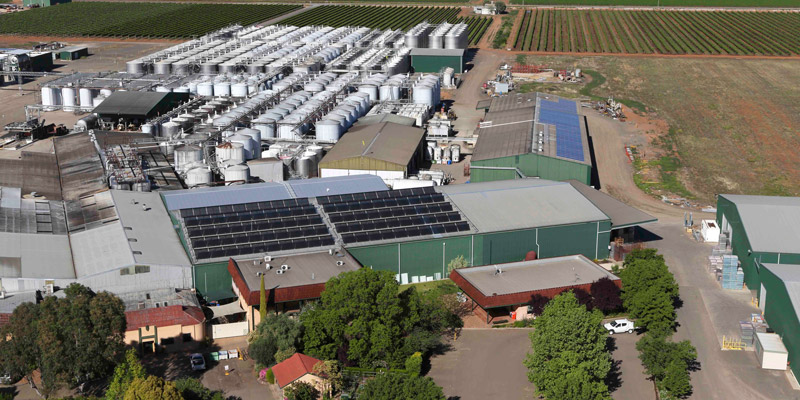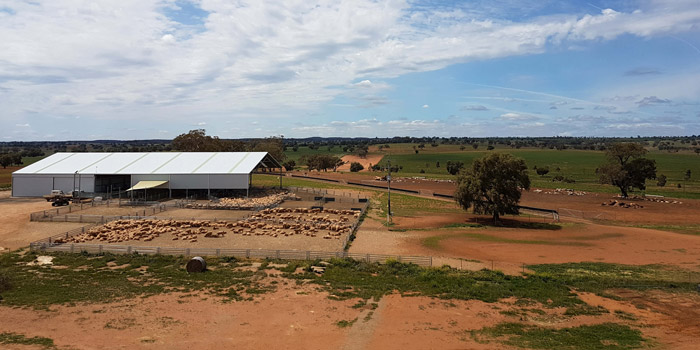The physical conditions that define our world are already noticeably altered, as the state of NSW is keenly aware.
Not so much because average temperatures have incrementally increased (although they have), but due to the increase in frequency and intensity of extreme climate events, such as floods and bushfires, that this modest-seeming temperature rise has caused. Our normal has and is being redefined in real time, through a parade of unfamiliar occurrences.
Why adaptation?
These changes have clear and specific implications for business, including disaster planning but also going well beyond it. How a business manages risk, and even how fit-for-purpose a business strategy is, are suddenly all in focus.
The business response to these changes is captured by the term ‘adaptation’, which has been defined as ‘the process of adjustment to the actual or expected effects of climate change’.
Adaptation can be incremental, for example when a business changes the route of a regular delivery, or it can be transformational, such as when a business switches strategy in anticipation of its customers’ changing needs.
So, what can, and should businesses do to adapt?
The detailed answer to that question differs depending on the size of the business. But regardless of size, businesses should start with an exploration of their business vulnerabilities. Helpfully, climate reporting practice frames these as climate risks and opportunities and provides approaches for identifying them.
What are climate risks?
The practice of climate reporting for business first emerged in 2017, when the Taskforce for Climate-related Financial Disclosures (TCFD) framework was released. The centrality of investors’ interests in the framework is revealed by the fact it was commissioned by the UK’s Financial Stability Board and headed by the Governor of the Bank of England, Mark Carney.
The TCFD transformed climate change into accessible and practical language for business.
The Taskforce reframed climate as a category of risk for business and provided a typology of specific climate risks for businesses to consider. The typology separates out the following categories (the first two covering multiple sub-risks):
- ‘Physical’ climate risks impact a business through weather events and changing climatic conditions, both directly (damage to assets) and indirectly (disruption to supply chains);
- ‘Transition’ risks emerge as society and the economy begin decarbonising and adapting, impacting businesses both directly (insurers’ reduced willingness to offer cover) and indirectly (change in customer needs); and
- Legal or litigation risk, as activists and investors increasingly use climate litigation to challenge companies for their emissions, inadequate climate reporting or insufficient attention to their climate risks.
Climate impacts can also emerge as opportunities, especially for businesses that are well-aligned and assisting with the climate challenges facing society. These opportunities also form part of the TCFD’s typology.
The TCFD framework has changed the way businesses and investors think about climate impacts, making it possible to interpret them as risks (and opportunities).
Businesses can then examine how these impacts could constrain and shape the futures of their businesses. For investors, understanding the climate risks is becoming a part of due diligence.
Climate reporting is now established practice in the corporate sector, and helpfully for investors, set to become even more common and consistent, as Australia moves towards mandatory climate reporting.
Many of the tools and approaches of climate reporting can also be picked up by smaller businesses, including SMEs and start-ups (whether ahead of or responding to calls from investors). A climate risk assessment is an obvious place to start.
Climate risk assessments
It’s not news that identifying, assessing and managing risks is a core part of business practice. Climate risk assessments draw on established practices and frameworks, like enterprise risk management frameworks. The only difference is the subject matter.
A climate risk assessment can be approached with various levels of sophistication, up to and including qualitative ‘scenario analysis’ or economic modelling.
The right level of sophistication to aim for is largely dictated by the nature and scale of the business, as well as the climate savviness of its investors.
Once identified, businesses can examine climate risks for the timeframe it might emerge over, the severity of its impacts, and any control measures that can be taken. Ownership of the risk can be assigned for continued monitoring and response.
Even these initial steps can provide valuable information for a business wondering how vulnerable it is to specific climate risks, and how far it could go in adapting to these.
A further step – with transformative potential – is to examine the business’ strategy in light of individual and bundled climate risks, and tweak that strategy as needed to better adapt to expected future conditions. Investors, accustomed to risks and ‘the big picture’, are coming to demand this kind of strategic clarity to safeguard their investments against the backdrop of a rapidly changing natural world, society and economy.
Reporting becoming mandatory
For some businesses, the choice to undertake a climate risk assessment won’t stay voluntary for much longer. Several jurisdictions internationally have moved to make climate reporting mandatory, a transition led by both governments (such as in New Zealand) and stock exchanges (such as in Singapore and Hong Kong).
The Australian Government recently signalled its intent to follow suit.
In June 2023, Treasury proposed mandatory climate reporting – consistent with the TCFD framework – to be phased in through financial years 2025-2027, according to the value of a business’ revenues, assets and number of employees. For the largest businesses, captured in financial year 2025, that only leaves a year and a half to prepare. For businesses just getting started, there’s quite a lot to do.
Thankfully, this reporting shouldn’t be looked at as a burden, but rather as a new and compelling aspect of existing risk and strategy considerations.
The process of better understanding a business’ climate risks and adapting the business in response – whether incrementally or transformationally – all draw on established business practices and use familiar concepts and language.
That should make it more appealing for business to take up, as they begin the challenge of adapting to an uncertain future as it continues to take shape.
Although adaptation will take different shapes for different businesses, the common denominator is that every business has challenges and opportunity ahead. Understanding the nature of those challenges and opportunities, and taking effective decisions in response, is the core task of adapting a business to the climate impacts that could determine its success from this moment on.
Join two days of discovery, collaboration and innovation from 4-5 December at the 2023 AdaptNSW Forum.
Articles
Find out how De Bortoli Wines is reducing its greenhouse gas emissions, operating more sustainably, and saving hundreds of thousands of dollars each year.
Find out how digital technologies can help farmers become more resilient to climate change and improve farm productivity.


